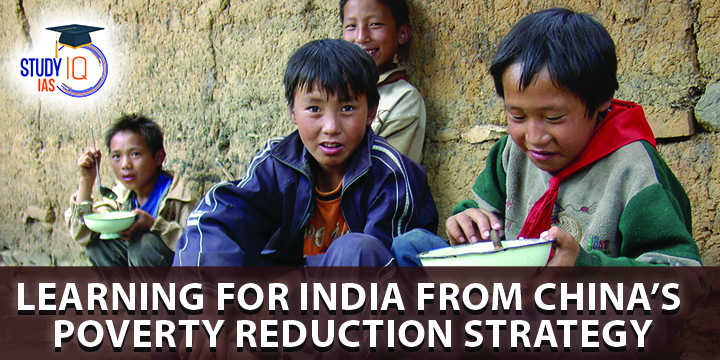Table of Contents
Poverty Reduction Strategy in India Status
Poverty Reduction Strategy : Close to 56 million (5.6 crore) in India are said to have been pushed into poverty in 2020. About 600 million Indians survive at less than $3.65 (Rs 84) a day level of expenditure.
Even though poverty levels were already increasing, the Covid and the war in Ukraine further impoverished Indians.
Poverty Reduction Strategy in India needs concrete policy decisions to bring about change. China is one such country that was globally recognized to have alleviated poverty at historically unprecedented speed and scale.
Poverty Reduction Strategy: Poverty Line and India’s PPP
- The World Bank (WB) defines extreme poverty using Poverty Reduction Strategy line, and it is pegged at US$2.15. In other words, anyone living on less than $2.15 a day is living in extreme poverty. About 648 million people globally were in this situation in 2019.
- The international poverty line is revised periodically to account for rising prices of goods and services over time. The $2.15 limit is based on 2017 prices.
- Through this calculation, the Indian equivalent of the international poverty line should be Rs 176 a day, by multiplying 2.15 by the rupee’s current market exchange rate with the US dollar (around 82).
- But the limit of $2.15 level is based on purchasing power parity (PPP). The PPP equivalent of $2.15 is the number of Indian rupees an Indian would need to buy the same basket of goods in India that an American can buy with $2.15 in the US. That equivalent in India is Rs 46, not Rs 176.
- This difference happens because the price of the same goods is different in different countries. Thus, it is quite likely that a dollar in India buys far more of the same commodity (say, an egg or banana) or service (say, a haircut) that it buys in the US.
- So, the international poverty line of $2.15 implies that any Indian who spends less than Rs 46 a day — in total — is living in extreme poverty.
- But, China, which is comparable to India in terms of the population size is globally recognized to have alleviated poverty at historically unprecedented speed and scale.
Chinas Poverty Reduction Strategy Achievements
- Poverty levels: According to a study by the World Bank and China’s Ministry of Finance, China’s poverty headcount dropped from 770 million to 5.5 million people between 1978 and 2019.
- Life expectancy and mortality: Life expectancy went up from 66 years in 1978 to 77 years by 2019, and the infant mortality rate fell from 52 in 1978 to 6.8 per thousand infants in 2019.
- Education: Education levels in China are relatively higher than in its peers.
- Human development: China’s position in the Human Development Index rose from 106 (out of 144 countries) in 1990 to 85 (out of 189 countries) in 2019.
China Poverty Reduction Strategy since 1978
What can India learn from Chinas Poverty Reduction Strategy
- Rapid economic growth: China achieved rapid economic growth, supported by broad-based economic transformation.
- In agricultural sector, poor people benefited directly from improvements in productivity associated with the introduction of market incentives.
- Development of low-skilled, labor-intensive industries provided a source of employment for workers released from agriculture.
- Urbanization helped migrants take advantage of the growth opportunities in the cities, and their monetary transfers boosted incomes of their relatives remaining in the villages.
- Public investment in infrastructure improved living conditions in rural areas and also connected them with urban and export markets far away.
- Government policies: Government policies to target persistent poverty initially focused on areas disadvantaged by geography and a lack of economic opportunities, but later focused on poor households across the country.
- China’s strategy can be termed ‘development oriented,’ implying a focus on creating economic opportunities as a means to escape poverty.
- A major component of these policies was social protection for poor households. They included specific programs in social assistance, social welfare, social insurance, and others.
- Effective governance: Effective governance measures helped in targeted poverty reduction. Government developed specific institutions to implement specific policies.
- China decentralized implementation arrangements, allowing significant scope for local experimentation. It encouraged a high degree of competition among local governments.
- This arrangement was subject to strong monitoring and accountability between levels of government to ensure coherence.
- Human capital development: Investments made by the government in education and expansion of health care since the 1950s resulted in real achievements in 1980s.
- As market reforms set in, human capital proved to be a critical input for the population to rapidly benefit from new economic opportunities.


 Serious Fraud Investigation Office (SFIO...
Serious Fraud Investigation Office (SFIO...
 Article 142 of Indian Constitution, Sign...
Article 142 of Indian Constitution, Sign...
 Pakistan-Occupied Kashmir (PoK): History...
Pakistan-Occupied Kashmir (PoK): History...





















